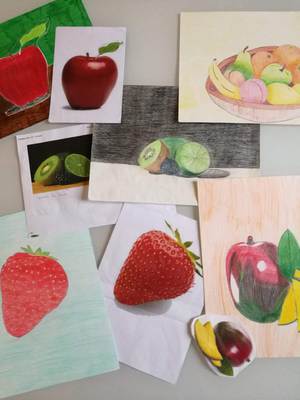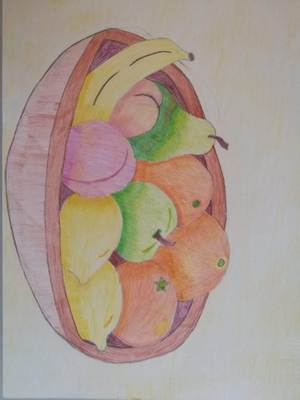nature.docx


Paola Vendrame (teacher of Art)
Art inspired by nature: the copy for learning how to see and draw
The copy: one of the first exercises to learn how to draw. Portraying real objects and landscapes or to copy from images too: the important thing is to try to reproduce as closely as possible what has been observed.
To copy, in fact, it is necessary to move from simply looking to seeing!
Watching is a passive activity, it’s the reception of a visual stimulus; seeing is an active phenomenon, it is going beyond, grasping proportions between the parts, balances of full and empty spaces, angles, details and geometries underlying the organization of the various parts.
We often tend to draw through easy stereotypes, eliminating small ambiguities, regularizing and simplifying the scene. Then we need to "educate" our vision and there is no more effective exercise than the copy!
The exercise of the copy is not a sterile and self-referential activity, rather it possesses a great didactic value: it forces us to overcome the stereotype and to observe reality exactly as it appears to our eyes.
INSPIRATIONS
I faced with students the issue of observing nature and its copy. Starting from the assumption that all the great artists of the past began copying, we have analysed the work of some of them: Michelangelo copied Giotto and Masaccio trying to understand the secrets of the strong three-dimensional nature of the figures they painted. Through the dashed drawing he caught the chiaroscuro and the sculptural modelling of his predecessors. We then moved on to the Baroque painters, we analysed in particular the work of Caravaggio and his “fruit basket”. We observed details of paintings representing fruit, flowers, tree and landscapes.
WHAT WE HAVE DONE
The students analyzed pictures and postcards, observing proportions and colors, striving to copy exactly what they saw, slowly abandoning the stereotypes. They discovered that the snow can be purple, the sky pink, the water red! A fruit can have unexpected nuances and light can shape objects. Using the technique of colored pencils, which allows nuances, delicacy and strength together, we have made copies of the different natural elements.
GOALS
• Consciously use tools, techniques and rules of visual representation for personal creative production.
• Learning to observe reality
• Abandoning stereotypes
• Recognizing colors, different shades and the elementary geometric shapes
• Recognizing the fundamental elements of an image and their arrangement in space
• Using color according to simple basic rules
• Reproducing visual messages with simple tools
• Elementary elaboration and reproduction of form and space
• Overcoming the stereotype
• Knowing how to observe and reproduce elements of everyday life
• Stimulating personal reworking of natural and non-natural elements
• Stimulating creativity
• Developing chromatic sensitivity